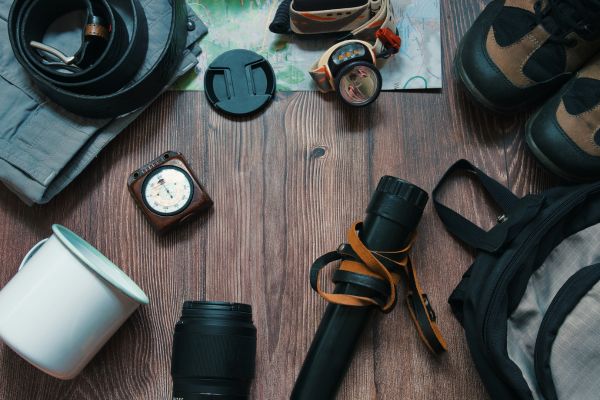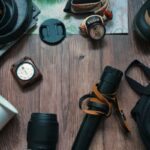So, you’ve decided to start hiking. That’s awesome. Hitting the trail is one of the best ways to unplug from daily chaos, breathe in some fresh air, and maybe even discover muscles you forgot you had. But let’s be real—walking into an outdoor store for the first time can feel like stepping onto another planet. Boots everywhere, packs in every size, high-tech gadgets you didn’t even know existed. It’s overwhelming. That’s why figuring out the best hiking gear for beginners matters so much—it keeps things simple, safe, and fun.
The good news? You don’t need to spend thousands of dollars to enjoy your first hike. You just need the essentials, the kind of gear that makes the trail feel welcoming instead of intimidating. Let’s break it down piece by piece.
Why the Right Gear Matters
Before we get into specific items, here’s the thing: having the right gear isn’t about looking like some seasoned mountaineer on Instagram. It’s about comfort and safety. The wrong shoes, for example, can turn a two-hour hike into a blister-filled nightmare. A cheap backpack might leave your shoulders aching before you even hit the halfway point. Choosing the best hiking gear for beginners means you’ll spend more time enjoying the view and less time regretting your decisions.
Hiking Footwear: Your Most Important Choice
Ask any experienced hiker and they’ll tell you—shoes can make or break your trip. You don’t need heavy-duty boots unless you’re tackling rough terrain or carrying a big pack. For most beginners, lightweight hiking shoes or trail runners are perfect. They’re supportive, breathable, and way easier to break in.
But here’s a tip: always try them on in the afternoon or evening. Your feet swell during the day, and you want a fit that works when your feet are at their largest. Toss in some good hiking socks—wool or synthetic, never cotton—and you’re golden.
The Backpack That Fits Just Right
Next up: backpacks. Honestly, you don’t need a giant, multi-day pack if you’re just starting out. A simple daypack in the 20–30 liter range is ideal. Look for one with padded shoulder straps, a hip belt, and enough compartments to keep your stuff organized. Hydration bladder compatibility is a nice bonus, but not a deal-breaker if you’re just carrying a couple of water bottles.
A beginner mistake I see all the time? Overpacking. You don’t need to bring your entire house. Stick to the basics—water, snacks, a light jacket, first-aid kit, and maybe a camera. That’s it.
Clothing: Comfort Over Fashion
When it comes to clothing, hiking is not a fashion show. The key is layering. Start with a moisture-wicking base layer (again, avoid cotton—it stays wet and makes you cold). Add an insulating layer like fleece if the weather calls for it. On top, bring a lightweight, waterproof jacket. Even if the forecast looks clear, trust me, mountain weather can flip faster than a pancake.
For pants, go for something stretchy and quick-drying. Jeans might look rugged, but once they get wet, they’re heavy and miserable. The best hiking gear for beginners always includes clothes that help you move comfortably and stay dry.
Staying Hydrated on the Trail
This one seems obvious, but you’d be surprised how many new hikers underestimate it. Water is non-negotiable. At minimum, carry two liters for a day hike. If you’re going somewhere with refill spots, consider a simple water filter or purification tablets. They’re lightweight, inexpensive, and could save you if you run out.
A hydration bladder can make sipping on the go super easy, but bottles work just fine too. What matters most is that you actually drink consistently, not just when you’re dying of thirst.
Snacks That Keep You Moving
Food is fuel. And while you don’t need a gourmet meal out there, packing the right snacks makes a difference. Think trail mix, granola bars, jerky, or fruit. Something that’s portable, not messy, and gives you quick energy. The point isn’t to have a picnic—it’s to keep your energy up so you can enjoy the hike instead of hitting a wall halfway through.
Navigation Tools You Shouldn’t Skip
In the age of smartphones, it’s tempting to rely on GPS apps. And sure, apps like AllTrails are great, but don’t make the mistake of trusting your phone alone. Batteries die, signals drop. Always carry a paper map of the area and a simple compass, even if you barely use them. It’s peace of mind.
The best hiking gear for beginners doesn’t have to include fancy gadgets, but basic navigation tools can make the difference between a fun hike and a stressful one.
Safety Gear You’ll Be Glad You Packed
Let’s talk safety. A compact first-aid kit should always come with you. It doesn’t need to be elaborate—just some bandages, antiseptic wipes, pain relievers, and blister pads. Toss in a whistle, too. It weighs almost nothing but can be life-saving if you need to signal for help.
A headlamp is another must-have. Even if you’re sure you’ll be back before dark, trails have a way of slowing you down. A lightweight headlamp with extra batteries is one of those “better safe than sorry” items.
Optional but Helpful Extras
Now, these aren’t deal-breakers, but they sure make hiking more enjoyable. Trekking poles, for example, can help with balance and reduce strain on your knees, especially on downhill sections. A sit pad is another small luxury—it’s basically a foam square that gives you a dry, comfy spot to rest.
And hey, don’t forget sunscreen and bug spray. Nothing ruins a beginner’s enthusiasm faster than being sunburned or covered in itchy bites.
Building Your Gear Slowly
Here’s the truth: you don’t need to buy everything at once. Start with the essentials—shoes, a decent backpack, comfortable clothing, water, and safety basics. As you hike more, you’ll figure out what extras are worth the investment. Maybe you’ll realize trekking poles are a game-changer, or maybe you’ll decide you’d rather keep things ultra-light. The point is, your hiking style will evolve.
The best hiking gear for beginners isn’t about having the fanciest kit. It’s about having the right pieces to make you feel confident enough to hit the trail.
Final Thoughts
Starting something new always feels a little overwhelming, and hiking is no different. But once you get your first few trails under your belt, you’ll see how little it actually takes to get started. A good pair of shoes, a reliable pack, some water, and a bit of common sense. That’s it. The rest you can build up over time.
The thing is, hiking doesn’t need to be complicated. The trail doesn’t care if your jacket is last season or your backpack is on the budget side. What matters is that you’re out there—breathing, moving, seeing the world in a way you just can’t from behind a screen.
So if you’ve been on the fence, here’s your sign. Grab your essentials, keep it simple, and start walking. Before you know it, you’ll be the one giving advice about the best hiking gear for beginners, and trust me, that first summit view will make it all worth it.





